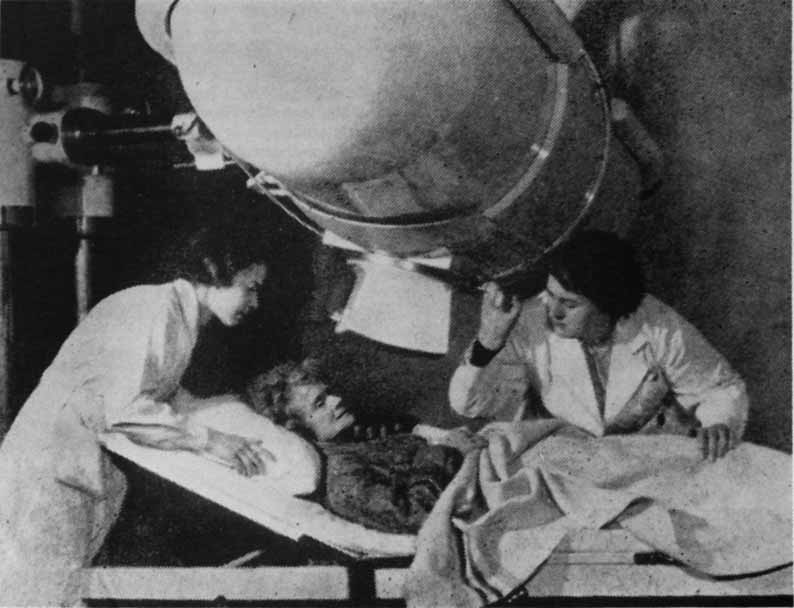In 1977, Dr. Rutherford Kaye Scott presented the first Sir Peter MacCallum Lecture at the opening of the new wing of the Peter MacCallum Hospital in Melbourne, which was published with the title “The Radiant Years” in Australasian Radiology (vol. 20, no. 1, pp. 6-31). In it he discussed the early use of radiation therapy in Melbourne. I was interested to find a brief description of early clinical physicists. Further descriptions were found in the 1975 commemorative review of radiotherapy issue of The Radiographer (vol. 22, no. 1, March 1975) and J. F. Richardsons “The Australian Radiation Laboratory: A concise history 1929-1979” published by the Australian Government in 1981.
The first clinical physicist appointed within Australia was Miss Dorothy Wellington (B.Sc), who was appointed at the Melbourne Hospital in 1935. At that time, the department had two Sanitas 400 kV units (pictured below) and radium emanation applicators, and the most comment treatments were of basal and squamous carcinomata. Miss Wellington can be seen in the picture below, with a Sanitas 400 kV machine. The tubes were mounted in baths lined with lead rubber, as no shockproof housings had been manufactured at the time for this voltage.

Dr. Kaye Scott mentions that Miss Wellington provided assistance in needle implantation (specifically mentioning that a procedure in which 34 needles were sewn in in 14 minutes with assistance from Miss Wellington and a Dr. Campbell). Richardson (1981) suggests that her appointment paved the way for other clinical physicists, at the Seventh Australian Cancer Conference (in 1936), a resolution was passed that a qualified physicist should be employed by each radiotherapy clinic. Miss Wellington left the old Royal Melbourne Hospital in 1938, when she married (becoming Mrs. Steel); though continued with her radiotherapy physics work while her husband was away during the war. Her personal life is described by her family here.